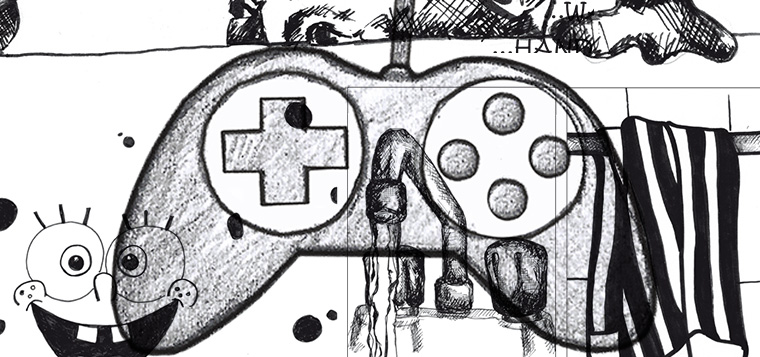What is Gamification?
Gamification is a new trend which has its roots far back in history. Over the centuries, the role of games in teaching children was very important. This process had a plethora of forms, but it is hard to imagine that its essence will change. The term “gamification” first appeared in 2002. The authorship belongs to Nick Pelling – a British-born computer programmer and inventor. But what is gamification actually? It is the use of design techniques, game mechanics, and other attributes in non-game contexts in order to drive game-like player behavior. Besides mechanics and design techniques, the other game attributes include gaming psychology, scripts and storytelling, social activities and other aspects of games. In their turn, social activities consist of public statuses, titles, leaderboards and other similar stuff. The term “non-game contexts” includes education, customer engagement, work, volunteerism, fitness and health, community participation, E-Commerce, etc. In its turn “game-like player behavior” implies such things as interaction, engagement, competition, learning, collaboration, addiction, awareness, etc.

All of these three aspects are very important. Without any of them, Gamification turns into a completely different process. “Game like behavior” is the main purpose of gamification as a strategy. If this aspect is missed, all previous actions are not important. Without game attributes gamification is absolutely another strategy. And don’t confuse gamification with different games because it requires non-game context.
Gabe Zichermann – Gamification
For example, includes two aspects of gamification. The lazy Twitter MMORPG causes game like behavior: you know that all your actions in social network lead to new actions in Tweeria, so you can furiously retweet and follow new people. This is an example of extra interaction and engagement. And of course the whole process includes a lot of game attributes like game principles and gaming psychology, but eventually Tweeria is a game, which is based on some principles of gamification strategy, but not the example of gamification itself.
Table of contents
Techniques
Now when you know what gamification is and what it isn’t we can talk more specifically about different techniques of it. All of them have features, which impact on people’s desires for achievement, competition, status, self-expression or altruism. Generally, influence is carried through the remuneration system. Users (or players) get their rewards for performing certain tasks: they can do social activities within the community or in social networks. Rewards can be divided into several parts. First one contains points. The second part is related to levels and achievement badges. The third one is about filling a progress bar. And the last part is based on virtual currency.
made a great attempt in using points as a reward system, which is based on social loyalty scheme of PowerReview. Users have to leave comments, reviews, post on social networks and answer other customers questions. For making extra engagement company established system of extra points for those users who are first to perform aforementioned tasks. Teleflora also has its leaderboard, but only few user profiles are completed. This can be changed by implementing a progress bar. As you can see, all forms of the remuneration system can be combined. As for Teleflora’s gamification strategy, it helped to increase traffic from Facebook by 105%.
is another good example. The completion of the account progress bar not only forces the users to show all the necessary information required for employer, but also gives more applications (a kind of reward), which users can send for new jobs.
Back in 2011 also showed a good way of how gamification can be used, but as an ad for new product. The company created an online game with a system of rewards. Players had to help athletes during their workouts outside in the cold. In the end the owner of the highest score could meet one of the athletes. Beyond the competition, players were also able to buy new winter clothing by Nike worn by the athletes from the game.
In case of Teleflora and Nike you can see that competition can play a very significant role in gamification. Why so? Probably for the reason that each of us is depended on the struggle for supremacy in a varying degree. Competition is an essential part of mankind as a species, both within own kind, and with different species. This our feature is so ancient that we often don’t even notice it, so it can drive our behavior, and that is used in different gamification strategies. In this case, it is highly important to make rewards and achievements visible for everyone. Visibility also has another side. Some people try to avoid competition, but their behaviour can be changed by giving them an exemplar. Thus, visible system of rewards and achievements can affect on people from different sides forcing them to commit similar actions.
Turn something serious (of just boring) into a game and make it engage more people is another approach to gamification. Typing games can be a vivid example for this approach. For the most people learning how to type quickly can turn into a joyless torment, but an introduction of game elements into the process turns routine into fun. In this case gamification is not fully manifested, it turns into a process, based on its principals, but some specialist do not separate such examples from the whole trend. Other examples are Quest to Learn – a school of New York City Department of Education, which relies on a game based learning; Ribbon Hero 2 – a game by Microsoft, which helps people to use Office effectively; Khan Academy – a great example of gamification in online education. And it is only a small part of the ever-growing number of examples.
Gamification in business and E-Commerce
But what are the main reasons for companies to use gamification? First of all it is an influx of new customers, even from hard-to-reach market segments. Nowadays it is very difficult to invent a revolutionary new product or service. The market is full of similar offerings from different companies, but the leadership belongs to those, who can present their products and services in the most appealing way for the consumers. Remember the example with Teleflora: company’s gamification strategy helped to increase traffic from Facebook by 105%. Probably one part of these facebookers are already customers of Teleflora, but there is also a substantial part of newcomers.
The second reason is about keeping the number of existing users permanent. It is also very important because competition in any market (with several players) increases. Retention of consumers current number requires new actions, and gamification can be on of them.
And Last but not least is an influence on consumers behavior. The right gamification strategy can increase sales. Such a result can be accomplished by introducing a system of virtual currency. For example, users perform certain actions and get virtual money, which they can partially use for the purchase of new products. Also, there are many other reasons for using gamification, but they are just derivatives of the aforementioned.
E-Commerce and retail are industries which benefit most from using gamification. Nowadays we can witness the transition of physical retailers into online while stores and supermarkets become showrooms. It is much more comfortable to look for desired goods sitting at home than walking from one store to another. This saves time and gives greater freedom of choice. Moreover, lower costs for the maintenance of personnel and shopping areas allow to reduce prices. In such situation gamification can keep the number of existing users and force them to perform certain actions. As a result, this can involve new consumers and grow sales both within old members and newcomers. To illustrate this situation I have a real life example. Last year I bought a laptop in the online store. With the device I got an email from the vendor, where I was asked to leave a comment on the site about my laptop and service. Even though everything has been absolutely superb I didn’t leave any comments. It was the end of the year and I was very busy, but the main reason was the absence of motivation. Leaving comments is not my favorite occupation, but including gamification into the process can bring a lot of fun into it. Let’s imagine the opposite situation. My online store makes extensive use of gamification. I am interested in leaving comments for several reasons: I can get some points or virtual currency; if I show constant activity I can get to leaderboard; leaving comments is not a routine task anymore. More positive reviews and comments make better reputation for the online store, as a result, more people show their loyalty and trust. This leads to the increase of the target audience and brings more income. The benefit of gamification is obvious.
Criticism
Every phenomenon has its critics and foes, and gamification is not an exception. Sebastian Deterding (researcher of Hamburg University) thinks, that artificial sense of achievement and unintended behaviors, which are closely related to gamification, are substantial reasons for criticism. The phenomenon also gets a lot of negative reviews from game community. Its members think, that gamification neglects the game values and culture as a whole.
Future of gamification
You should remember the time when all video games have been limited to consoles. But during the last 20 years, they have significantly expanded the influence. The number of players is still constantly growing. Technologies evolve and become more accessible for ordinary consumers. On that basis gamification has all chances to be a part of everyone’s life, as social networks did. Games coupled with non-game processes have all chances to flood the internet space and break out of it. According to gamification as an industry will receive 2.8 billion dollars by 2016, and according to the number of big companies using the new technology will increase to 70%. It is safe to say that we are on the edge of a new approach to the usual things which is called gamification.
Sources










